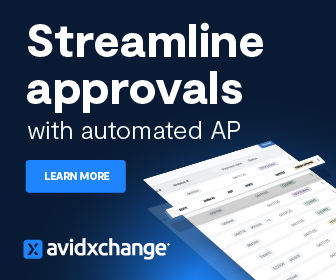Businesses in virtually every industry are exploring ways to integrate artificial intelligence into their day-to-day workflows.
However, effectively implementing AI requires rock-solid data infrastructure. While this is traditionally viewed as an IT problem, the finance department has an important role to play as well. Here’s what you need to know.
Why Controllers Should Lead the AI Data Conversation
Artificial intelligence has moved beyond theory into practical application, promising to transform how organizations operate. But before it can deliver value, AI needs clean, well-structured, and accessible data. As a finance leader, you are uniquely positioned to ensure this foundation is in place.
Think about principles that you already incorporate in your day-to-day work. Concepts like accuracy, governance, and compliance make you a natural steward of the AI preparation process. By championing strong data infrastructure practices, you can accelerate AI adoption and ensure that the insights generated are reliable and strategically useful.
The Link Between Data Infrastructure and AI Success
AI models are only as good as the data they consume. Poor-quality data leads to flawed predictions, misguided decisions, and lost trust in AI tools. A finance-led approach ensures that:
- Data accuracy is maintained through rigorous validation
- Access is controlled to protect sensitive information
- Standardized definitions prevent inconsistencies across departments
Without this foundation, AI investments become costly experiments.
By leading the charge, though, you can set the stage for a condensed time to value and a strong return on investment.
Assessing the Current Data Environment
Before your organization implements new AI tools, start with a data readiness audit. During the audit, focus on the following:
- Identify Data Resources: ERP systems, CRMs, supply chain data, HR systems, and external fees are common sources
- Evaluate Data Quality: Check for duplicates, outdated records, and gaps
- Map Data Ownership: Determine which departments control which datasets
This information provides a clear picture of what’s ready for AI integration and where you need to conduct additional preparatory work.
Establishing Data Governance That Scales
Governance is the backbone of an AI-ready infrastructure. It keeps information up to date and minimizes the risk of inaccurate data creeping into your AI model.
To strengthen your governance structure, partner with IT and compliance teams to:
- Assign responsibility for maintaining accuracy and integrity
- Ensure that only authorized personnel can view sensitive data
- Address regulatory requirements such as GDPR, CCPA, and industry-specific standards
Scalable governance ensures that as data volume and complexity grow, quality and compliance remain intact.
Standardizing and Structuring Financial Data
AI tools perform best with structured, consistently formatted data. As a controller, you can champion initiatives to:
- Align accounts across business units
- Use common coding for transactions, vendors, and customers
- Standardize reporting periods and fiscal calendars
These practices improve traditional analytics and reporting while preparing your organization for AI implementation. In the long term, data standardization reduces the risk of errors and makes financial insights more accessible to stakeholders.
Integrating Data Across the Enterprise
Artificial intelligence delivers the most value when it can draw from multiple data sources. Partner with IT to identify all potential sources of information to feed into your AI tools. Some common examples are:
- ERP
- CRM
- Operational data feeds
- Third-party systems
In AI-ready organizations, many of these platforms are already connected. If they’re not, focus on tearing down data silos so that AI models have the broadest possible context for analysis. The more information you can feed to your artificial intelligence platform, the more useful the insights it will deliver.
Ensuring Data Security for AI Applications
When you integrate AI into your digital infrastructure, you create new security considerations. AI models may have access to sensitive financial and personal data. Promote security by collaborating with IT to:
- Encrypt data in transit and at rest
- Implement multifactor authentication for access to AI platforms
- Regularly audit AI system logs for suspicious activity
A security-first mindset ensures that your powerful AI tools do not become a weakness that cybercriminals can exploit.
Training Finance Teams for AI Literacy
A well-prepared data infrastructure is only valuable if finance teams know how to leverage AI insights. You can support their success by:
- Partnering with IT to create user-friendly dashboards and interfaces
- Hosting AI-focused training sessions for finance staff
- Encouraging experimentation with low-risk AI use cases, such as expense categorization or variance analysis
AI literacy empowers the finance function to move from passive recipients of insights to active shapers of strategy.
Positioning Finance as the AI Readiness Champion
Are you ready to take the lead in harnessing the benefits of AI? When you step into this role, finance can guide how AI is implemented and used.
Your organization will adapt faster to market shifts by leveraging AI-driven insights grounded in reliable data. Embrace the evolving role of the finance department by harnessing the power of artificial intelligence.




